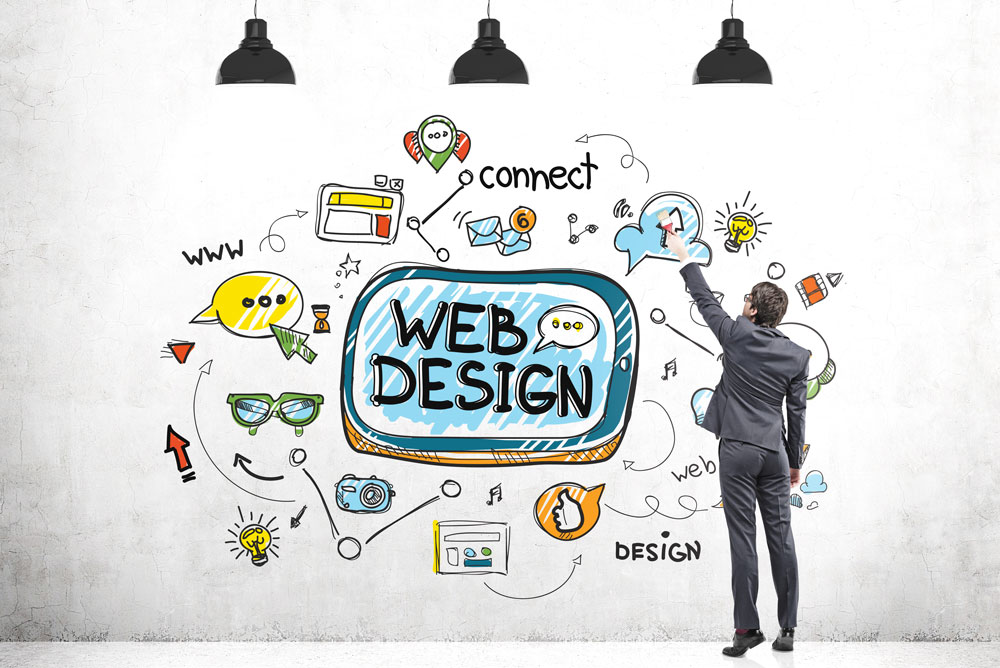Typical Mistakes to Stay Clear Of in Your Company's Web Design Refine
Exactly How to Attain a Balanced and Visual Website Design That Fulfills the Diverse Requirements of Individuals and Companies Alike
Achieving a well balanced and aesthetic web design that successfully fulfills the varied demands of individuals and companies requires a nuanced understanding of both layout concepts and customer habits. By integrating components such as color, typography, and images with the necessary facets of functionality and ease of access, developers can produce engaging electronic experiences. The challenge exists in ensuring that these aspects work with each other cohesively while dealing with the unique demands of varied customer groups. Exactly how can one navigate this detailed landscape to strike the right equilibrium? The answer may depend on a much deeper exploration of vital design approaches.
Comprehending User Requirements
As web design increasingly comes to be a critical aspect of customer experience, understanding customer needs arises as a fundamental action in producing reliable digital atmospheres. web design. An extensive understanding of user requirements is essential for establishing sites that not only attract visitors yet likewise engage and keep them. This understanding can be accomplished through various approaches, including customer study, surveys, and functionality screening, which supply understandings into user preferences, habits, and pain factors

Furthermore, recognizing individual requires expands to responsiveness and accessibility, ensuring that all users, no matter of device or capability, can browse the website flawlessly. By embedding user-centric concepts right into the style process, web designers can produce balanced atmospheres that meet the diverse needs of both users and services. Ultimately, prioritizing individual understanding causes a lot more significant interactions and improved general contentment with the digital experience.
Principles of Visual Layout
A user-centered technique naturally brings about the factor to consider of aesthetic style principles, which play a crucial duty in forming the general user experience. web design. Reliable aesthetic style balances aspects such as color, typography, images, and design to produce an aesthetically appealing user interface that resonates with customers
Color theory is basic, as it stimulates feelings and influences understanding; therefore, a thoughtful color palette can improve brand name identification while ensuring readability. Typography, on the various other hand, adds to the style's clarity and power structure, assisting users with the web content seamlessly. Selecting font styles that line up with the brand name's individuality promotes acknowledgment and engagement.
Images is an additional crucial element, providing context and aesthetic passion. High-grade images should matter and sustain the overall story while avoiding clutter.
Moreover, the design has to ensure a rational circulation of details. Making use of principles such as positioning, closeness, and whitespace improves company and promotes navigation.
Incorporating these visual design concepts not just brings in users but also promotes trust fund and integrity, eventually leading to a more satisfying interaction. By integrating aesthetic components, designers can develop an interesting and remarkable experience that satisfies the varied requirements of customers and organizations alike.
Relevance of Use
Use stands as a cornerstone of effective website design, directly influencing how users connect with a website. It encompasses the convenience with which customers can navigate, understand, and involve with site web content. A well-designed site facilitates seamless communication, ensuring that customers can efficiently accomplish their tasks without unnecessary irritation. When functionality is focused official statement on, it enhances individual satisfaction, causing boosted interaction and higher conversion rates.
Moreover, a focus on usability cultivates trust and reputation. Websites that are user-friendly and very easy to browse are viewed as professional and trusted, encouraging users to return. Conversely, inadequate functionality can lead to high bounce prices, as users rapidly desert sites that annoy them.
In addition, usability is vital for satisfying diverse individual requirements. Eventually, by focusing on use, web designers create a more engaging, reliable, and reliable on-line experience that benefits both customers and companies alike.
Ease Of Access Standards in Design
Including access standards in website design is important for developing a comprehensive online setting. These requirements, largely laid out by the Web Material Availability Guidelines (WCAG), make sure that all customers, including those with specials needs, can properly interact with digital content. By sticking to these standards, developers can enhance use across different platforms and tools.
Key elements of ease of access consist important site of providing alternate message for images, making sure sufficient color comparison, and making use of clear and consistent navigation. In addition, carrying out key-board navigability allows individuals who can not utilize a mouse to accessibility all performances. It is additionally important to take into consideration using display readers, which require well-structured HTML to share information properly.
Moreover, adhering to availability criteria not only advantages users with impairments however also enhances the total individual experience. A well-designed, available site can raise engagement, minimize bounce prices, and broaden the audience reach. In an affordable digital landscape, prioritizing access is not just a lawful commitment; it is an ethical critical that mirrors a commitment to social responsibility and equal rights. Inevitably, incorporating ease of access right into website design is a crucial step toward achieving a well balanced and aesthetic electronic presence that offers the demands of all customers.
Harmonizing Visuals and Functionality
While striking a harmonious equilibrium between visuals and performance is crucial in website design, achieving this balance usually presents a difficulty for developers. An aesthetically attractive website can mesmerize customers, drawing them right into the web content; nevertheless, if it does not have functionality, the user experience can rapidly deteriorate. Conversely, very useful sites might prioritize usability but threat showing up uninviting or boring.

Moreover, interactive aspects should complement the overall style, providing appealing experiences without overwhelming users. Components like buttons and types must be clearly visible and easy to connect with, strengthening functionality.
Ultimately, successful web layout synthesizes visuals and performance, creating an interesting atmosphere that satisfies the varied requirements of users and services alike (web design). By thoroughly taking into consideration how each layout selection influences both aesthetics and functionality, designers can craft sites that reverberate with individuals while satisfying their designated objectives
Conclusion
In verdict, accomplishing a balanced and aesthetic website design calls for a thorough strategy that incorporates user-centered layout principles with functionality and access factors to consider. By recognizing customer requirements and sticking to aesthetic style concepts, developers can develop visually attractive user interfaces that retain capability. The emphasis on functionality and adherence to access standards ensures that varied user groups can engage flawlessly with electronic systems. Inevitably, this all natural method promotes interaction and satisfaction, profiting both individuals and services alike.